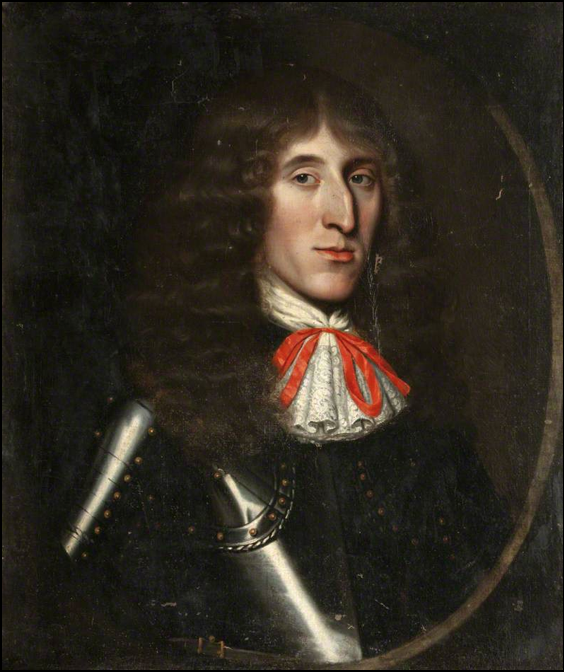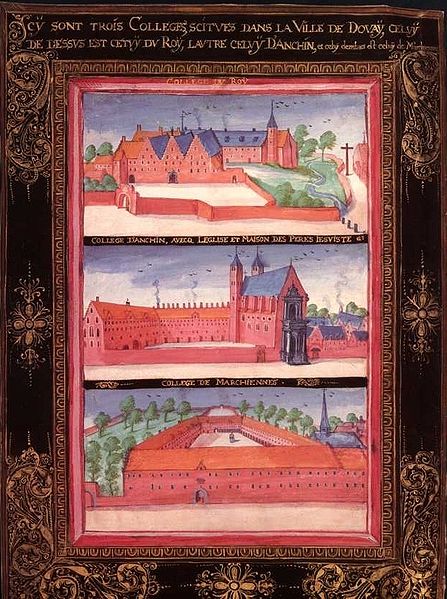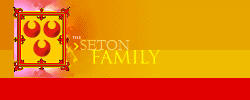|
 The
Honourable Sir Robert Seton, Baronet of Windygoul. The
Honourable Sir Robert Seton, Baronet of Windygoul.
Sir
Robert Seton, Bart of Windygoul, was born
10th November 1641, and was the eighth and youngest son of George Seton, 3rd
Earl of Winton by his second marriage to Elizabeth Maxwell, daughter of John
Maxwell, 6th Lord Herries of Terregles.
Like his brother John, he was provided for early in life and was educated
well-educated in the Catholic-tradition
of the Seton family
at the Scots College at Douai,
France. Although his two elder brothers from their
mother, both Christopher Seton and brother William Seton,
were drowned along with their mother when their ship
en-route to Flanders was wrecked off the Dutch coast in
1648, he then inherited his elder brother William's
patrimonial Estate of Windygoul.
On 24th
January, 1671, at the age of 29 he was created a Baronet of Nova Scotia, with the style "of Windygoul"
('so called from its being
situated on a spot much exposed to the wind'), and which
lands in Tranent were bordering those of the Seton's of
Myles. The Estate had originally been
conferred on his father, the 3rd Earl of Winton, and which he later provided
for his son William, and which then passed to Robert as his
appanage.
He is described by
Kingston as 'ane hopefull young gentleman and a good
schollar', and was a noted staunch Catholic like all of his
family, and showed great promise.
However he never
married, and became ill suddenly and died on or about his
30th birthday in November, 1671,
and unfortunately with him the
baronetcy expired,
and as noted by Kingston, that he was
buried in the 'Colledge Kirk of Seton'.
Being firmly attached
to the Scot's College of Douai, upon his death, he left 30,000 merks to
the College, and his immediate elder brother Sir John Seton of Garleton
served heir to him. His portrait, painted circa 1600,
was done by David Scougall and resides at Traquair House,
like that of his brother Sir John.
The grim old tower of Windvgoul is now
a picturesque ruin. It can be visited from Tranent.
On the 20th of February, 1672, his elder brother Sir John
Seton of Garleton was served as his heir. The date of his death appears in the
entry in the record relative to his testament-dative and inventory of goods,
etc., given up by Anna, Countess of Traquair, Isobel, Lady Semple, and Lady Mary
Seton, his sisters-german and only executors. Amount of debts owing to the
deceased . . ,£62,800, 10s. 'Intromitted with by Sir John Seton of
Garleton presently of ready money, gold, etc., lying beside the deceased, his
abulziements, furniture of his lodging, certain horses, etc., value 5000 merks.'
Confirmed 7th April 1673, Captain Francis Wauchope, brother to the Laird of
Niddrie, being cautioner.

The Scottish College or Scot's College at Douai was a
seminary founded in Douai, France, for the training of Scottish Roman Catholic
exiles for the priesthood. It was modelled on the similar English College there,
founded for the same purpose. It has an unfortunate notoriety in consequence of
the long dispute between the Jesuits and the secular clergy which centred round
it in later times. It was established in 1594, not as a new foundation, but as
the continuation of a secular college at Pont-à-Mousson in Lorraine, which,
owing to the unhealthfulness of the site, had to seek a new home. In 1506,
however, it moved again, and it was not till after several further migrations
that it settled finally at Douai in 1612.
The college was devoid of resources, and it was due to the
zealous efforts of Father Parsons in Rome and Madrid, and of Father Creighton in
France and Flanders, that numerous benefactions were given, and it was placed on
a permanent footing. For this reason, the Jesuits afterwards claimed the
property as their own, although it was admitted that in its early years secular
clergy had been educated there. Appeals and counter-appeals were made, but the
question was still unsettled when the Jesuits were expelled from France in 1764.
The French Government, however, recognized the claims of the Scottish secular
clergy and allowed them to continue the work of the college under a rector
chosen from their own body.
Of Windygoul, from the coal-pits of Easter Tranent, the
second is known as the Heuch Level, and which strikes off a little to the north
of Tranent Mains, cuts across the fields, entering the glen at the foot of the
Dookit Brae and proceeding up through the Heuch, it sweeps past the west end of
the village, skirting the Caponha' Splint pit bottom, and finishing a little to
the north of Wester Windygoul. When opened up at Caponha' many years ago,
the bed of this level was found to contain some 12 or 14 inches of rich yellow
ochre, most of which was raised to the surface and used in the village for
housewashing purposes, although this level was originally begun and finished by
the Earls of Winton, and which were part of the Windygoul Estate.
The grim old tower of Windygoul is unfortunately, now gone,
which by the 1960s where although an appreciation of the vernacular architecture
of East Lothian's magnificent farm buildings was developing, did not stop the
demolition of East and Wester Windygoul in the 1970s and 1990s respectively.
East Windygoul was demolished in the early 1970s to make way for the Carlaverock
housing scheme. The only remains of the farm is the row of three cottages and
the grieve's house. Wester Windygoul was converted into a 'country pub' by the
name of 'Farriers' in the late 1980s, which named was changed to 'Windygoul' a
few years later. However, trade as a country pub appeared to be poor because it
was demolished in November 1999 and private housing put up on the site. As
regards the name of 'Farriers', no blacksmithing was done here, at least since
the 1960.
| 
